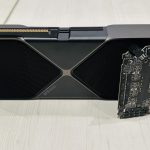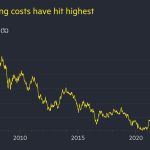If you’ve been following the SPAC boom, you may have noticed something about these blank-check vehicles that are springing up left and right in order to take public privately held companies. They are being organized mostly by men.
It’s not surprising, given the relative dearth of women in senior financial positions in banking and the venture industry. But it also begs the question of whether women, already hustling to overcome a wealth gap, could be left behind if the trend gains momentum.
Consider that studies have shown women investors are are twice as likely to invest in startups with at least one female founder, and more than three times as likely to invest in startups with female CEOs. It’s not a huge leap to imagine that women-led SPACs might also be more inclined to identify women-led companies with which to merge and take public.
SPAC sponsors can reap handsome rewards, too. In return for lining up investors, then persuading a target company to accept the terms it offers them, sponsors typically receive 25% of the SPACs founder shares, which can mean a lot of money in a short amount of time, given that SPACs typically aim to merge with a company in two years or less. In fact, even if the SPAC performs terribly — say the company with which it merges is later accused of fraud — those sponsors get paid.
Eventbrite cofounder Kevin Hartz, who is overseeing a $200 million SPAC, explained it to us in August this way: “On a $200 million SPAC, there’s a $50 million ‘promote’ that is earned.” But “if that company doesn’t perform and, say, drops in half over a year or 18-month period, then the shares are still worth $25 million. (Hartz himself called this guaranteed payout “egregious,” though he and his partner in the SPAC, Troy Steckenrider, didn’t structure their SPAC differently, saying that as a first-time SPAC sponsor, they wanted to keep things straightforward.)
Women aren’t entirely unaccounted for in the current SPAC craze. Thanks to a state law passed in California in 2018, nearly all SPACs based in California have a female director, as reported earlier by Axios.
More, in the two weeks, at least three SPACs to register with the SEC have been launched exclusively or in part by sponsors who are women. Hope Taiz, a New York-based investor who began her investment banking career at Drexel Burnham Lambert, registered plans this week with the SEC to raise a $300 million blank-check company called Aequi Acquisition.
Northern Star Acquisition, a consumer-focused SPAC co-led by magazine vet Joanna Coles, meanwhile filed for a $300 million IPO last week, and Climate Change Crisis Real Impact I Acquisition, a SPAC focused on climate technology, raised $200 million in an IPO . The blank check company is co-led by Mary Powell, the former CEO of Green Mountain Power.
One SPAC sponsor — Betsy Cohen, a founder and former CEO of the financial services company Bancorp — has really taken to SPACs, establishing four fintech-related shell firms so far, the most recent of which raised $750 million last month. (As an interesting aside, the SPAC programs of both Goldman Sachs and Jefferies are led by women.)
Given these developments, some might wonder — reasonably — if it isn’t a little early to worry about women missing out on this apparent gold rush. Still, women-led SPACs represent a minuscule percentage of the 133 SPACs that have raised more than $50 billion in proceeds this year at last count.
More, the only tech investors to jump into the pool to date are exclusively men, including Chamath Palihapitiya of Social Capital (who has dozens of SPACs in mind); Hartz and Steckenrider; entrepreneur-investors Reid Hoffman and Mark Pincus, Ribbit Capital’s Mickey Malka; former Uber executive Emil Michael; and the founders of FirstMark Capital.
It isn’t that their female counterparts aren’t paying attention, seemingly. A number of top women VCs with whom we’ve talked say they’re following the action and weighing how to participate. One such prominent investor told us she’s been researching under what circumstances it makes sense for VC firms to engage in a SPAC’s origination.
Others may be looking to gain exposure first to SPACs through their portfolio companies. Dana Grayson of Construct Capital, for example, led an early investment in the 3D printing company Desktop Metal — which is going public through a SPAC-led deal — while a partner the firm NEA. At TechCrunch’s recent Disrupt event, Grayson, speaking about Desktop Metal, called SPACs a “great new viable alternative for companies.”
Either way, observes Kristi Marvin, a former investment banker who now runs the data site SPACInsider, it’s not time to panic, she suggests.
For one thing, as with “most banking things, SPACs skew heavily male,” so it’s to be expected that many more men are sponsoring SPACs. The SPAC market is also on the verge of overheating, based on what she is seeing. “You have 10 deals trying to price in the same day, and investors are tapped out.”
SPACs also require a learning curve that some underestimate. “It’s why you see hedge funds and PE firms more involved in SPACs; they have infrastructure to do them versus three guys who are facing a ton of work just to do the administrative side of things,” notes Marvin.
As with other financial products, Marvin expects to see more women embrace SPACs over time, especially if they prove to be as durable as many early adherents suggest. That said, she adds, “If in a year or two, it’s still only male VCs who’ve dipped their toe into SPACs, it may be a problem.”
Powered by WPeMatico





